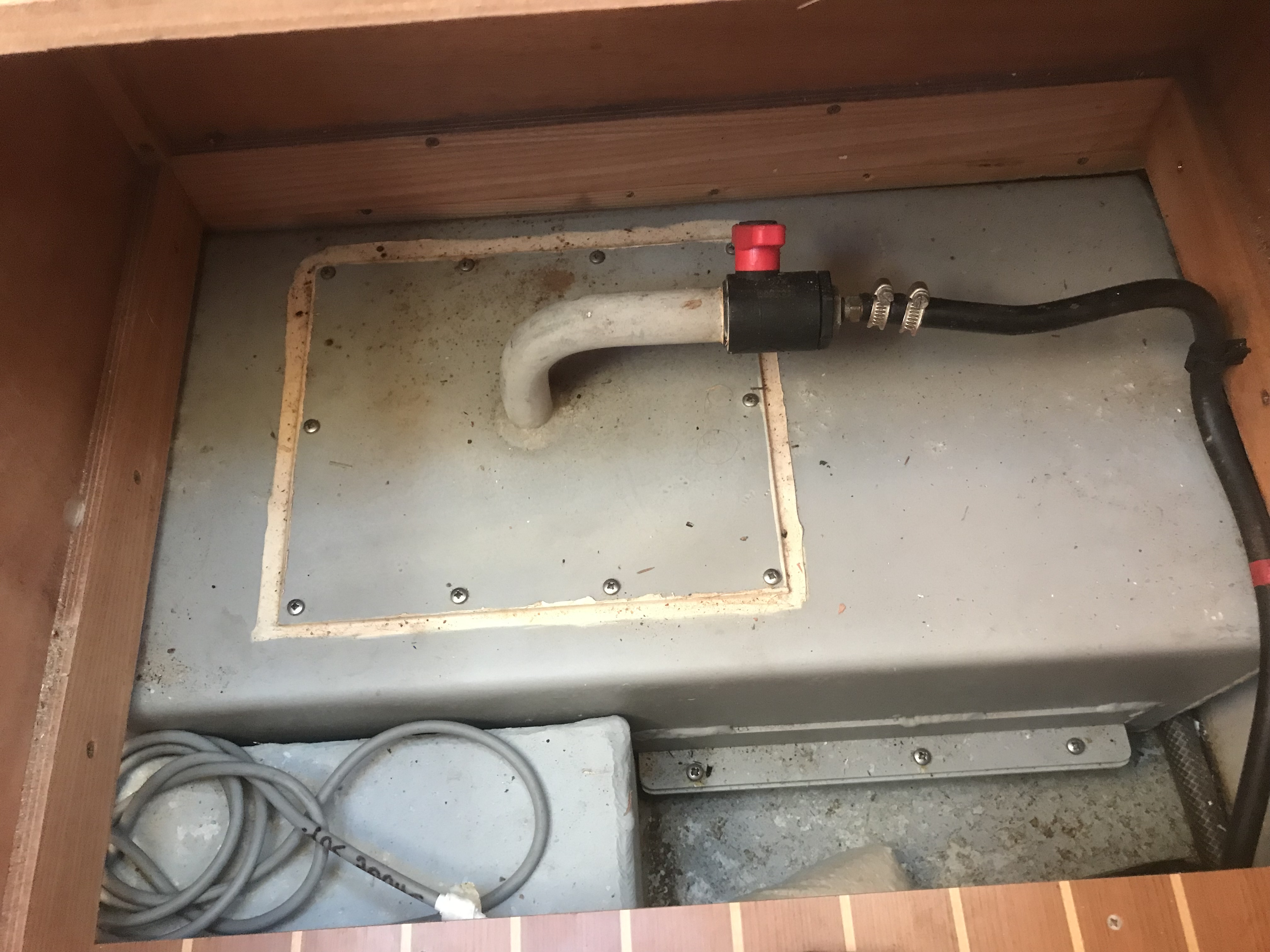In a late night December 2017, we step foot on the boat we would later call Ubi, with a few pieces of luggage. Fast forward to today, we have an intimate knowledge of most of its parts, due to the maintenance and the upgrades but mostly due to all the repairs we had to perform. So it is always surprising when we discover something new about Ubi.
During the last engine maintenance, we noticed a third gas line leading to the diesel filter. It was odd because we know of two gas tanks located below the port and starboard berths. Each one has approximately 150-liter capacity. With their combined 300-liter or 75 gallons of diesel, we can run the engine for about 100 hours at about 2200 RPM. At an average of 5 knots, this gives us a max range of 500 nautical miles, which has been sufficient for us in the Caribbean and in Northern America. But heading out from San Diego to Mexico, we had a 600+ miles crossing to Cabo San Lucas so we needed to carry 2 extra fuel jerricans and refill when we could, i.e. in Ensenada and in Turtle Bay.
Tracing back the third gas line, we found a stainless tank bolted forward of the port water tank. It is located below a locker below a settee of the saloon. We must have ran into it when we moved in on the boat or provisioned, but we must have thought it was the other side of the old buffer tank probably used for a prior water maker. With a closer look at it, we estimated it can hold about 80 liters (~20 gallons), giving us an extra 30 hours or 150 nautical miles of theoretical range. This estimation was done by measuring the tank and calculating its volume, which was a perfect application for Noah’s geometry lessons.
We planned to open it up today but we stopped after unscrewing three screws of the inspection plate because we could see in the screw holes that the tank is actually full of diesel. We wanted to assess the condition of the tank and its integrity to hold fuel, but we didn’t need to look inside as it carried fuel since before we got the boat without leaking. However, we couldn’t assess the quality of the fuel. We did try to take a sample for the deck fitting but we couldn’t get our hose to the fluid.
Next time we are at an anchorage for a few days, we will try to run the engine from this surprise tank and see how the fuel looks like as it will flow through the Racor fuel filter. We are cautiously optimistic that it would be of good quality and therefore increase our range of this extra 30 percent.
To be continued.
Note: in our visit to Alubat this winter, we asked about this tank and they were not aware of it, leading us to believe that it was added after production by one of the P.O. (previous owners).

I have also such a tank on my OVNI 43, but it has been built in by ALUBAT. Useful but it can’t be used directly, its content needs to be transferred to one of the two normal fuel tanks using a transfer pump (very slow)…
Interesting as Alubat told me they never installed such tanks, but they might be confused. It was 19 years ago after all that the boat was in their yard.
Ours is directly connected to the fuel system so it is easy to use the diesel.
BUT, we discovered a leak when we were in San Benedicto. Lots of diesel in the bilge and lots of spoiled food… The story about this tank is not finished yet… stay tuned.